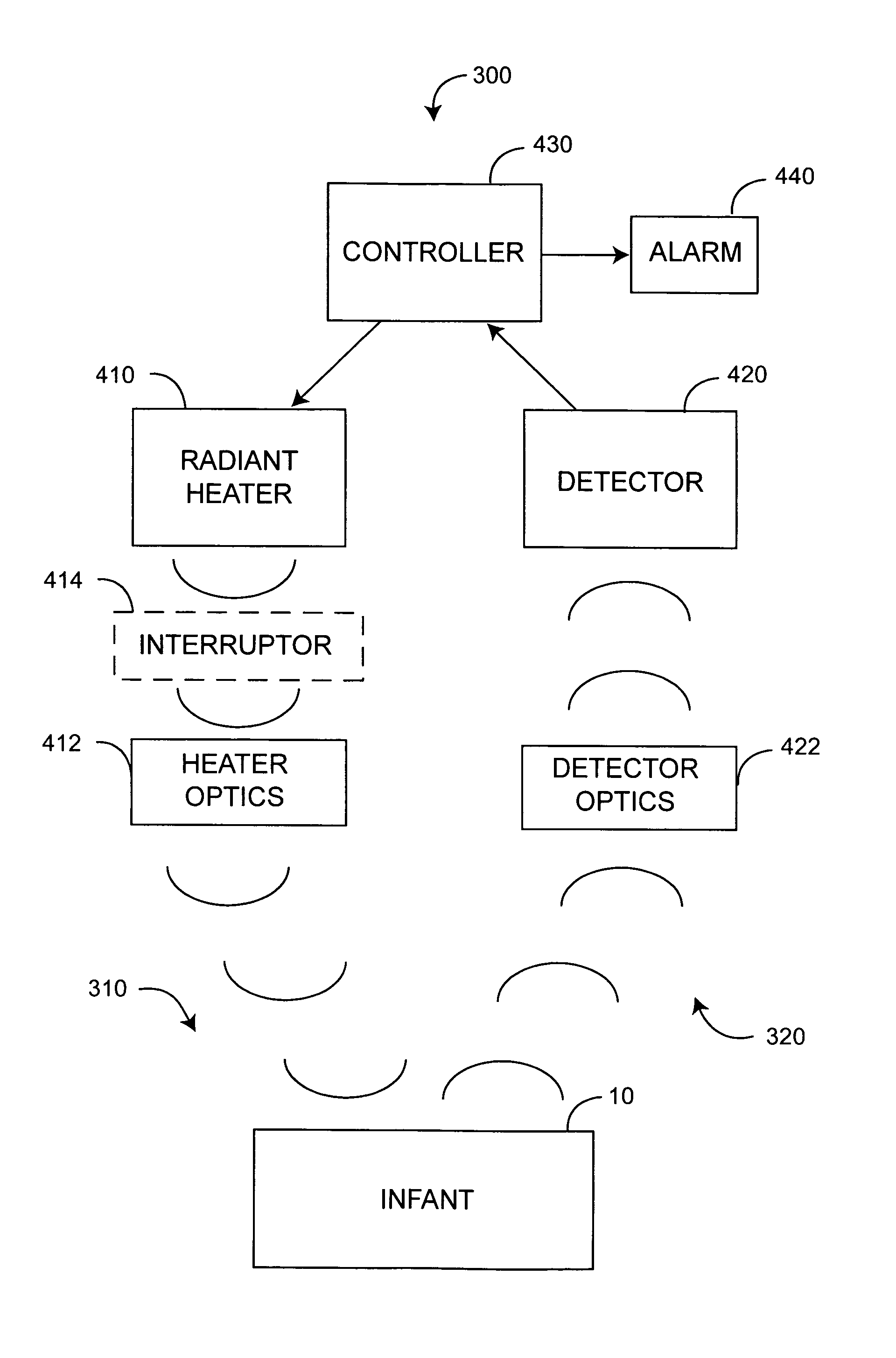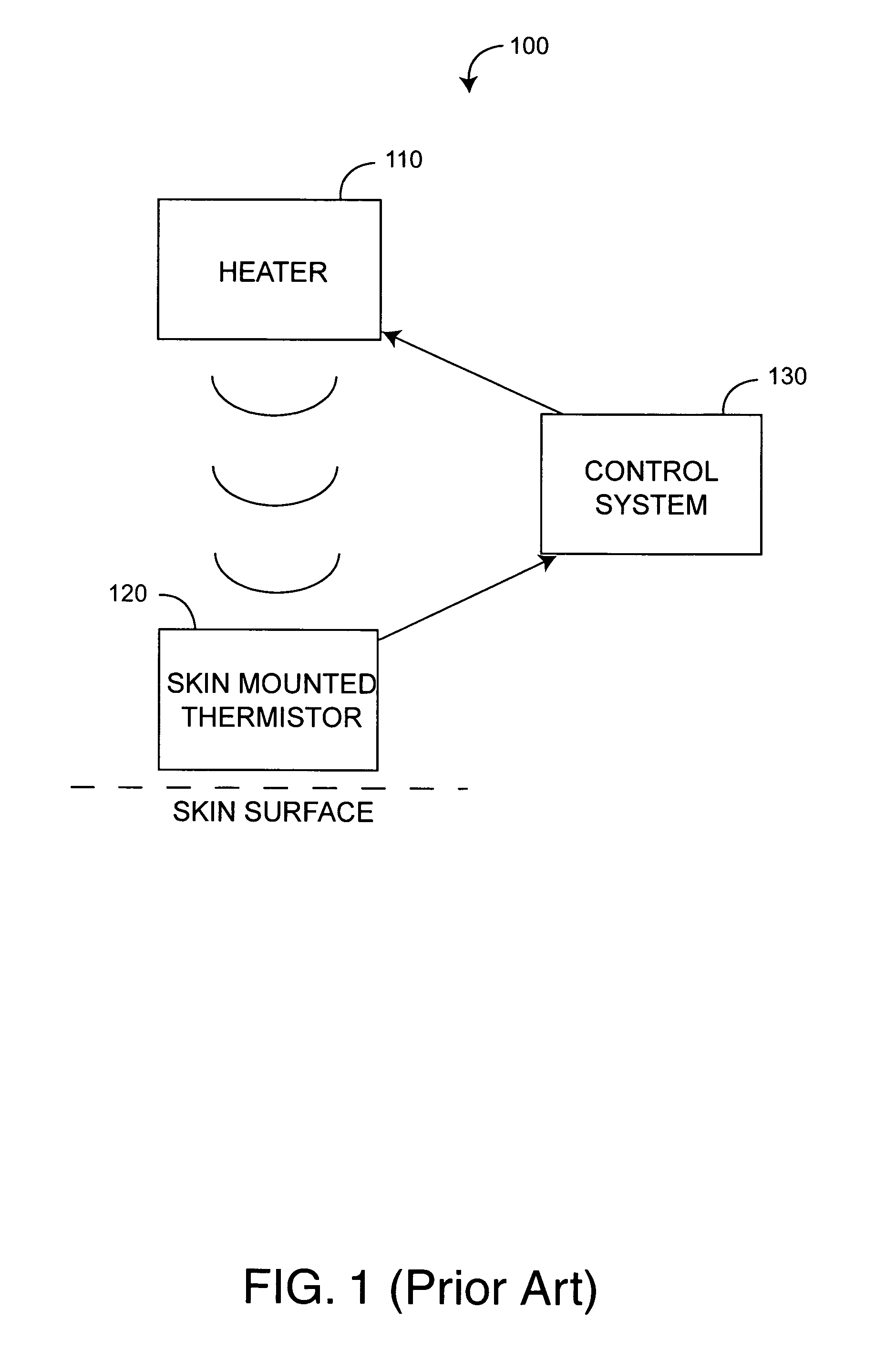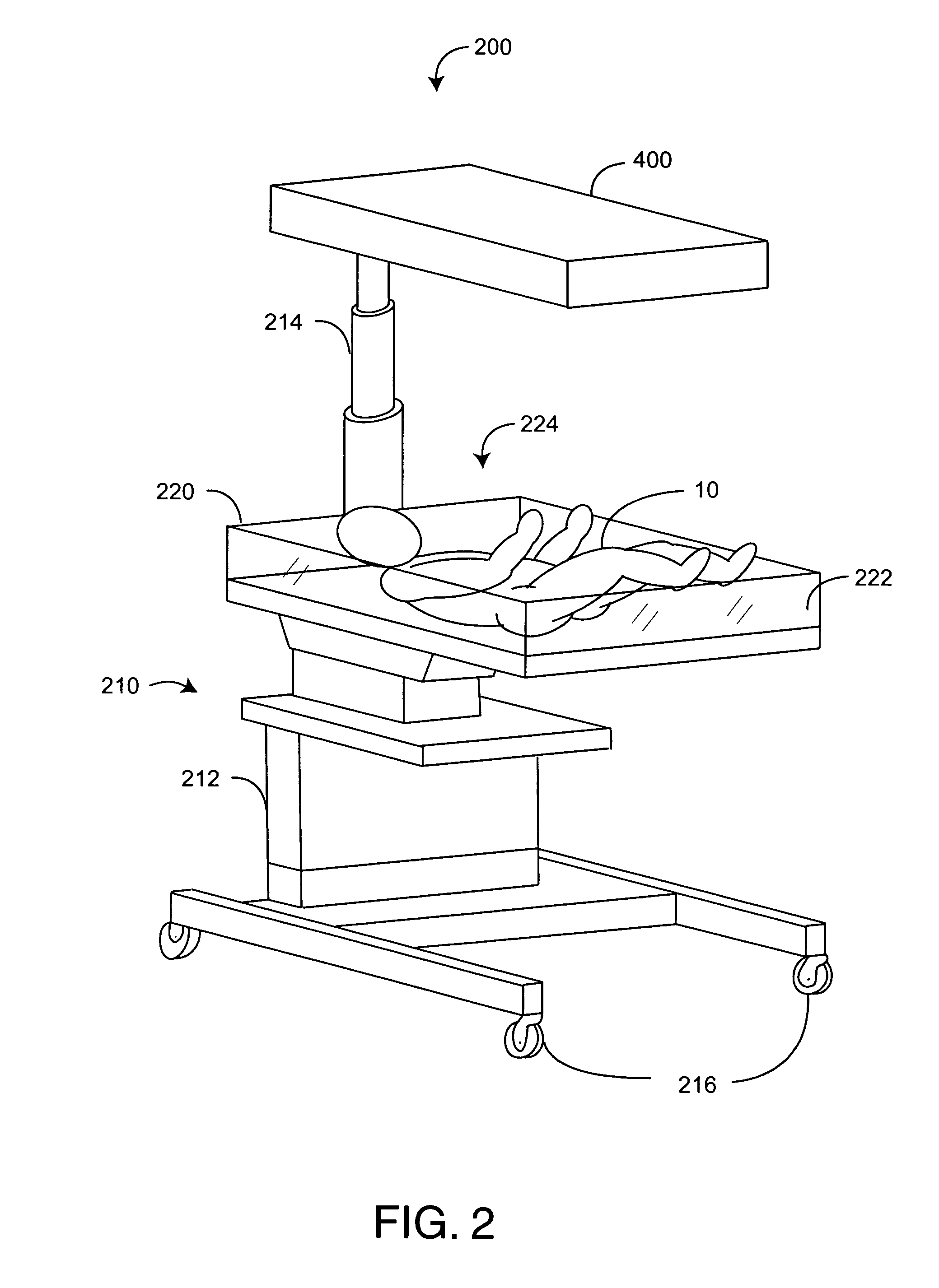Remote sensing infant warmer
a remote sensing and infant warmer technology, applied in the field of remote sensing infant warmers, can solve the problems of inconvenient and inaccurate regulation of infant warmth by conventional infant warmers, risk of over- or under-heating, and conventional infant warmers may have trouble detecting a partially dislodged thermistor, so as to reduce skin-reflected radiant heater energy
- Summary
- Abstract
- Description
- Claims
- Application Information
AI Technical Summary
Benefits of technology
Problems solved by technology
Method used
Image
Examples
Embodiment Construction
[0014]FIG. 2 illustrates a remote sensing infant warmer 200 having a stand 210, a tray 220 which holds an infant 10 and a heating fixture 400. Advantageously, a detector 420 (FIG. 4) and a controller 430 (FIG. 4) are disposed proximate the heating fixture 400 so that the detector 420 (FIG. 4) can remotely sense infant skin temperature and the controller 430 (FIG. 4) can adjust the infant warmer's radiated heat accordingly.
[0015]As shown in FIG. 2, transparent walls 222 contain the infant 10 safely within the tray 220. The tray 220 has an opening 224 exposed to the heating fixture 400. The stand 210 has a base 212 that mounts the tray 220 and a support 214 that mounts the heating fixture 400. Wheels 216 are attached to the base 212 for infant warmer mobility. The support 216 is adjustable so as to position the heating fixture 400 at various distances from the infant 10.
[0016]FIG. 3 illustrates a control system 300 having a radiant heater 410, a detector 420 and a controller 430. The ...
PUM
 Login to View More
Login to View More Abstract
Description
Claims
Application Information
 Login to View More
Login to View More - R&D
- Intellectual Property
- Life Sciences
- Materials
- Tech Scout
- Unparalleled Data Quality
- Higher Quality Content
- 60% Fewer Hallucinations
Browse by: Latest US Patents, China's latest patents, Technical Efficacy Thesaurus, Application Domain, Technology Topic, Popular Technical Reports.
© 2025 PatSnap. All rights reserved.Legal|Privacy policy|Modern Slavery Act Transparency Statement|Sitemap|About US| Contact US: help@patsnap.com



